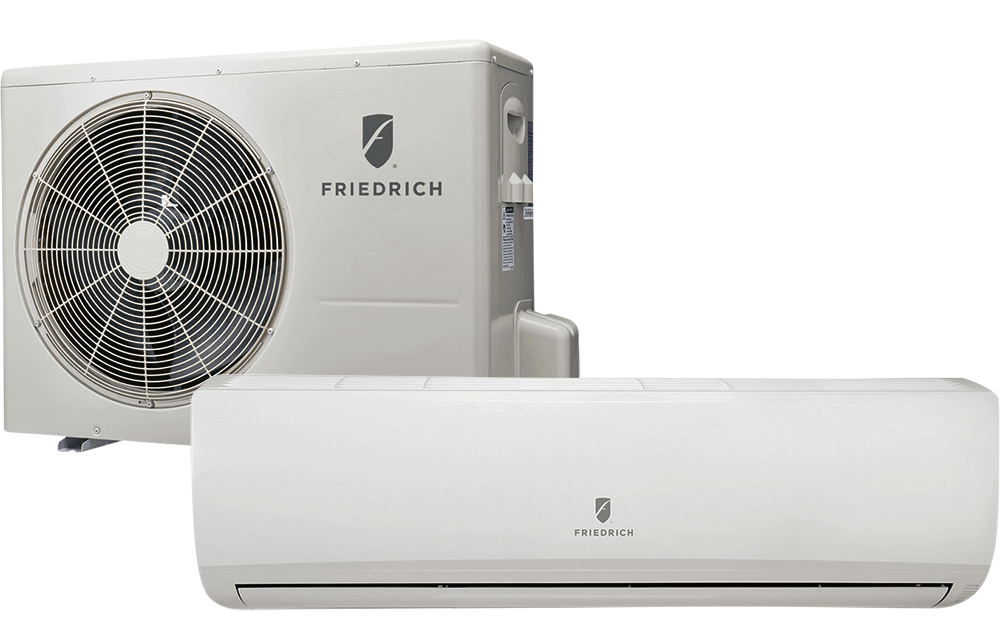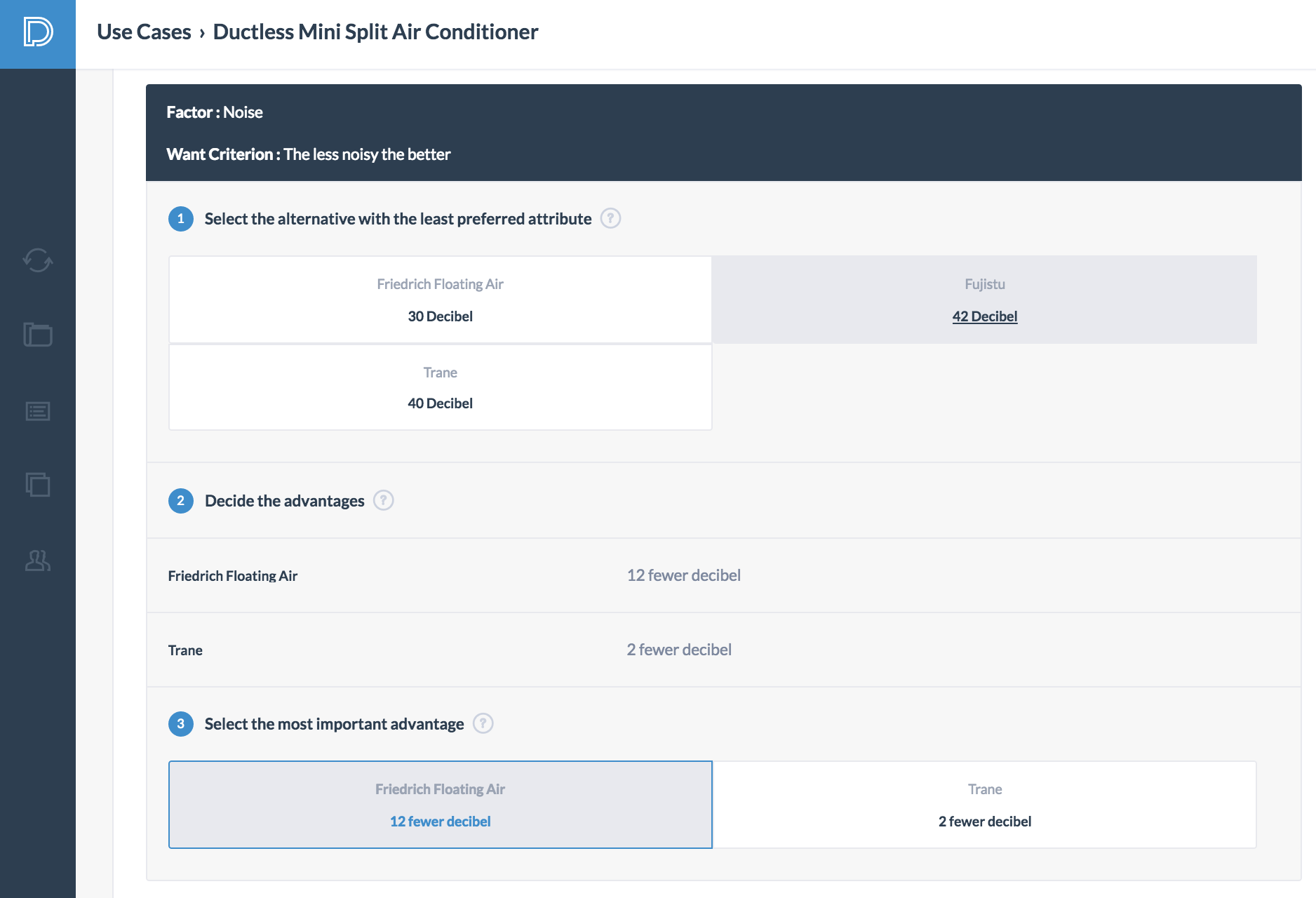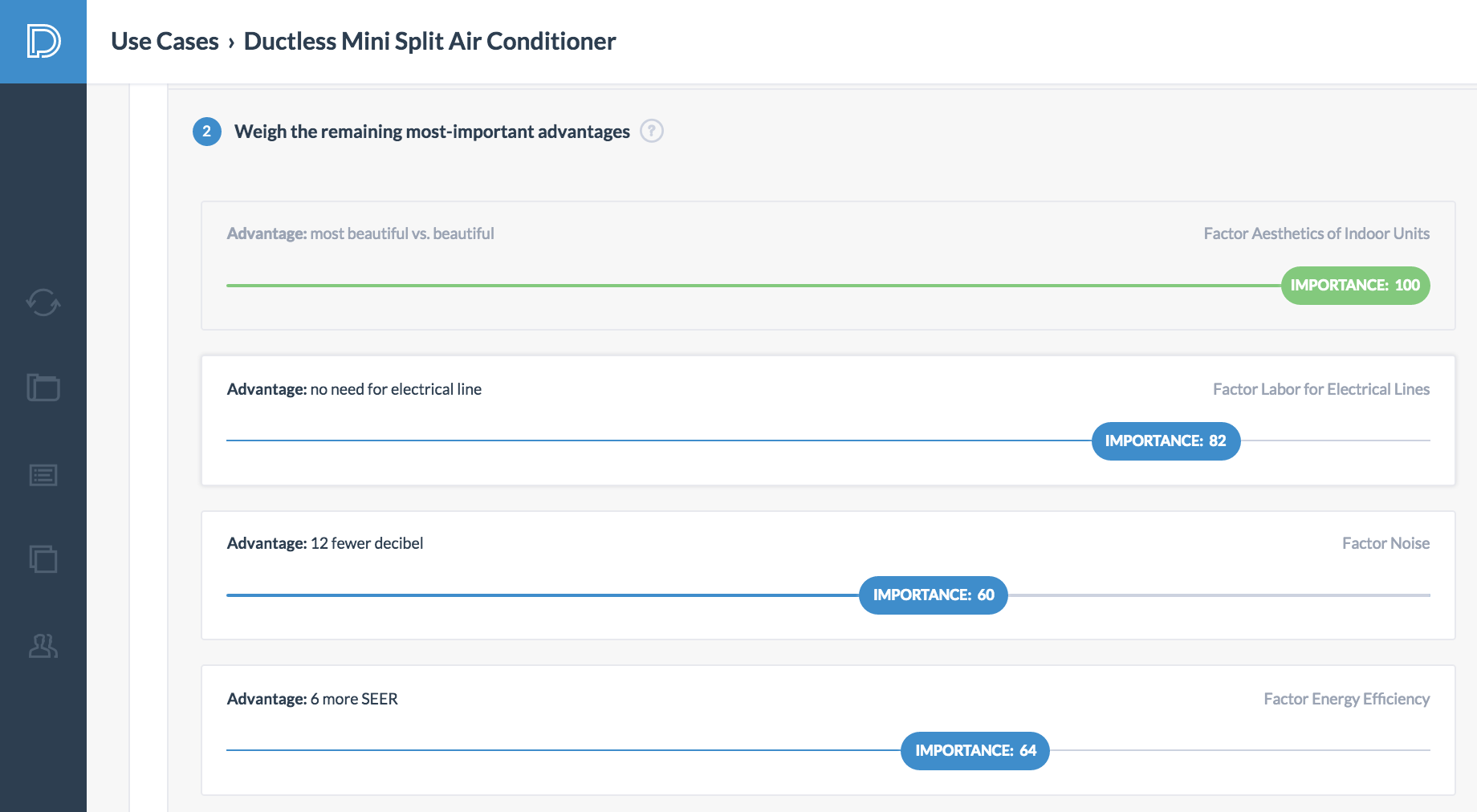All characters, companies, and events in this scenario are entirely fictional. The goal of the scenario is to demonstrate how an organization might use the Paramount Decisions process to develop a transparent and sound decision.
Acme Construction Company has just been awarded a tenant improvement project of a historic building in the city. The building was constructed in the 1930s and was not designed to accommodate a duct air conditioning system. The client has asked Acme Construction Company to use a ductless mini split air conditioner for the project. Since this is the first time that the project manager has used a ductless system he wants to make sure that he is making the most informed decision. He uses Paramount Decisions because it gives him a structured process to evaluating the different options in a logical and data-driven manner.

The first step is to define the decision's goals and objectives. In this situation the goal is to choose a ductless mini split product to use. His trusted supplier has 3 very popular brands for him to choose from.
There are three alternatives for this decision: 1) Friedrich Floating Air, 2) Trane, and 3) Fujistu. All three brands come from highly reputable companies. Friedrich has been the market leader in hotel air conditioners for over 100 years. Trane has been one the best regarded names in commercial air conditioning. Fujitsu is a Japanese company that has specialized in ductless mini split with over 45 years of experience in this industry.
For this decision, he has considered the following factors:
1) Ease of Installation
2) Energy Efficiency
3) Noise
4) Labor for Electrical Lines
5) Air Filter Quality
6) Aesthetics of Indoor Units
7) Warranty
The criteria of each of these factors are shown below.

The project manager consults with his supplier and gathers the submittal data on the three products in order to fill out the attributes. An attribute is a characteristic, quality, or consequence of just one alternative. An attribute can either be qualitative or quantitative. In this example for the factor "Energy Efficiency", the Friedrich system has 16 SEER, the Trane system has 22 SEER, and the Fujitsu system has 18 SEER.
Some of the attributes of this decision are shown below.

The key insight in making good decisions is to base them on the advantages of alternatives. For the factor "Noise", the least preferred attribute is Fujitsu because it is the loudest product with 42 decibels. The advantage of the Friedrich relative to the the Fujistu is 12 fewer decibels and the advantage of the Trane relative to the Fujitsu is 2 fewer decibels. The Friedrich Floating Air is the most important advantage in this factor with and advantage of 12 fewer decibels.
The project manager continues the 3 step process for each of the factors by: 1) selecting the least preferred attribute, 2) stating the advantages of the other alternatives relative to the least preferred attribute, and 3) selecting the most important advantage in each factor.

The sixth step in the decision-making process is the most subjective and requires an open dialogue between the stakeholders. The group first selects the "Paramount Advantage", which is the most important advantage. They then weigh the remaining advantages relative to the Paramount Advantage.

The seventh step in the decision-making process is to define the cost. The cost is the price that must be paid in order to obtain an alternative and can be broken into several categories. Notice that the cost is treated separately with a clear distinction from the previous steps.

The project manager finally makes his decision base on the total importance of advantages vs cost. In this situation, the Friedrich air conditioner cost the least and offers the highest amount of advantages. He ultimately chooses this alternative.

One of the benefits of using Paramount Decisions is the automatically generated reports. The software can create two types of reports base on the data inputted for the decision: 1) a full report and 2) a single page (A3 report). The project manager can easily send out the reports to different stakeholders to communicate the rationale of the decision.
